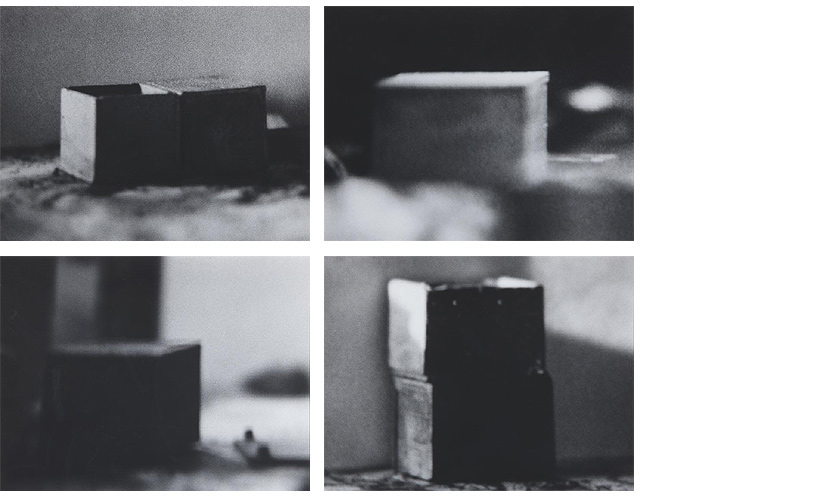
2024 National Photography and Plastic Arts Prizes go to two artists with works in the Banco de España Collection, Jorge Ribalta and Pedro G. Romero.
This year, the Spanish Ministry for Culture has awarded its national prizes for Photography![]() and Plastic Arts
and Plastic Arts![]() to two artists with works featured in the Banco de España’s collection: Jorge Ribalta (b. Barcelona, 1963) and Pedro G. Romero (b. Aracena, Huelva, 1964). The jury cited Ribalta’s ‘extensive artistic, curatorial and critical career’ and his key role in the ‘revision of documentary photography and its historiography through his art, research and writings’. The jury said of Romero that his work ‘manages to address, retrieve and reinsert popular culture — in all its most ungovernable expressions — into our public sphere’, opening up ‘new fields in art that go beyond institutional criticism’.
to two artists with works featured in the Banco de España’s collection: Jorge Ribalta (b. Barcelona, 1963) and Pedro G. Romero (b. Aracena, Huelva, 1964). The jury cited Ribalta’s ‘extensive artistic, curatorial and critical career’ and his key role in the ‘revision of documentary photography and its historiography through his art, research and writings’. The jury said of Romero that his work ‘manages to address, retrieve and reinsert popular culture — in all its most ungovernable expressions — into our public sphere’, opening up ‘new fields in art that go beyond institutional criticism’.
The Banco de España Collection contains a large number of Jorge Ribalta’s works spanning two decades of the photographer’s career, from 1998 to 2018. They exemplify his unwavering commitment to the reinvention of the documentary tradition and his determination to bring historical density and the political, public dimension back to photographic realism, eschewing essentialism and nostalgia.
 Jorge Ribalta: Restoration [series] (2017-2018)
Jorge Ribalta: Restoration [series] (2017-2018)
The most recent of Ribalta’s works in the collection is his Restoration (2017-2018) series, which was commissioned by the bank to document the restoration and cleaning work on the exteriors of its Cibeles offices. The final set consists of 96 photographs, arranged in six groups of sixteen. Ribalta sees the photographic device as a ‘historical machine’; in this work, he plays with the double meaning of ‘restoration’ portraying the building as a document-cum-monument to Spain’s Bourbon Restoration period (1874-1931), while at the same time offering a critical reflection on the relationship or equivalence between photography and money. The piece featured in the exhibition The Architecture of Eduardo de Adaro and the Banco de España. A Changing World staged in the Banco España exhibition hall from 24 October 2023 to 24 February 2024.
![Jorge Ribalta: Petit Grand Tour [serie] (2007-2008)](/f/webca/ADS/Noticias/NotPremioRibaltatxt02.jpg) Jorge Ribalta: Petit Grand Tour [series] (2007-2008)
Jorge Ribalta: Petit Grand Tour [series] (2007-2008)
Restoration is one of a number of projects in which the artist addresses the dialectic surrounding the document/monument and ways in which it has been utilised to create a historical discourse on national identity. The first of these projects was his Petit Grand Tour (2007-2008) series (also in the bank’s collection). Ribalta there examines the historical and archaeological complex at Tarragona to explore the role of monumental cities in transforming the urban economy, whilst showing the potential of documentary photography as an instrument for institutional analysis.
 Jorge Ribalta: Carnac, 1 August 2008. History Lesson (2008)
Jorge Ribalta: Carnac, 1 August 2008. History Lesson (2008)
Anther of these works that stand mid-way between history, economics, politics and culture is Carnac, 1 August 2008. History Lesson (2008), which Ribalta produced at much the same time as Petit Grand Tour. It was acquired by the Banco de España in 2014. The piece revolves around a guided tour of the ‘Ménec alignments’ of megalithic standing stones in Carnac, Brittany. To paraphrase the artist, the work highlights the fact that monuments are documents, which — as historian Aloïs Riegl said in 1903 — crystallise or fossilise the artistic will (kunstwollen) of their time.

Jorge Ribalta: Untitled 549-2 (1998-1999), Untitled 549-3 (1998-1999), Untitled 549-4 (1998-1999) and Untitled 550-2 (1998-1999)
As well as these three series, the collection also contains four photographs taken by Ribalta in the late 1990s: Untitled 549-2, Untitled 549-3, Untitled 549-4 and Untitled 550-2. They were taken during a period in which Ribalta’s focus was on dismantling the fiction of photographic naturalism, using images that he carefully prepared in his studio, often charged with a profoundly poetic aura.
 Pedro G. Romero: Matemática demente [A Tangled Tale] (1988)
Pedro G. Romero: Matemática demente [A Tangled Tale] (1988)
Pedro G. Romero is an unorthodox artist; in his varied artistic career, he has concentrated on building polyhedral devices of reflection and production, in which the collective plays a major role. The work in the Banco de España collection, the diptych Matemática demente (1988), comes from an early stage in his career. It takes its title from the Spanish edition of Lewis Carroll’s collection of stories, A Tangled Tale. In this piece, Romero juxtaposes two apparently antithetical images in relief: one is a portrait of Leopoldo María Panero, Spain’s quintessential poète maudit and the other consists of some simple, concentric squares referencing a well-known model by Bauhaus painter and professor Josef Albers. As Carlos Martín notes, Romero is playing ‘with the paradox of sanity and insanity, paranoia and logic (Panero and Albers) to redraw the limits between rational thinking and madness’. This dialectic relationship between lucidity and madness — different shoots growing from the same root — is reinforced by the material employed by the artist in each of the drawings. Whereas one is in sulphur, the other uses a yellow acrylic imitating sulphur. The result is that over time, the portrait ages more rapidly, while the geometric figures remain unaltered.
